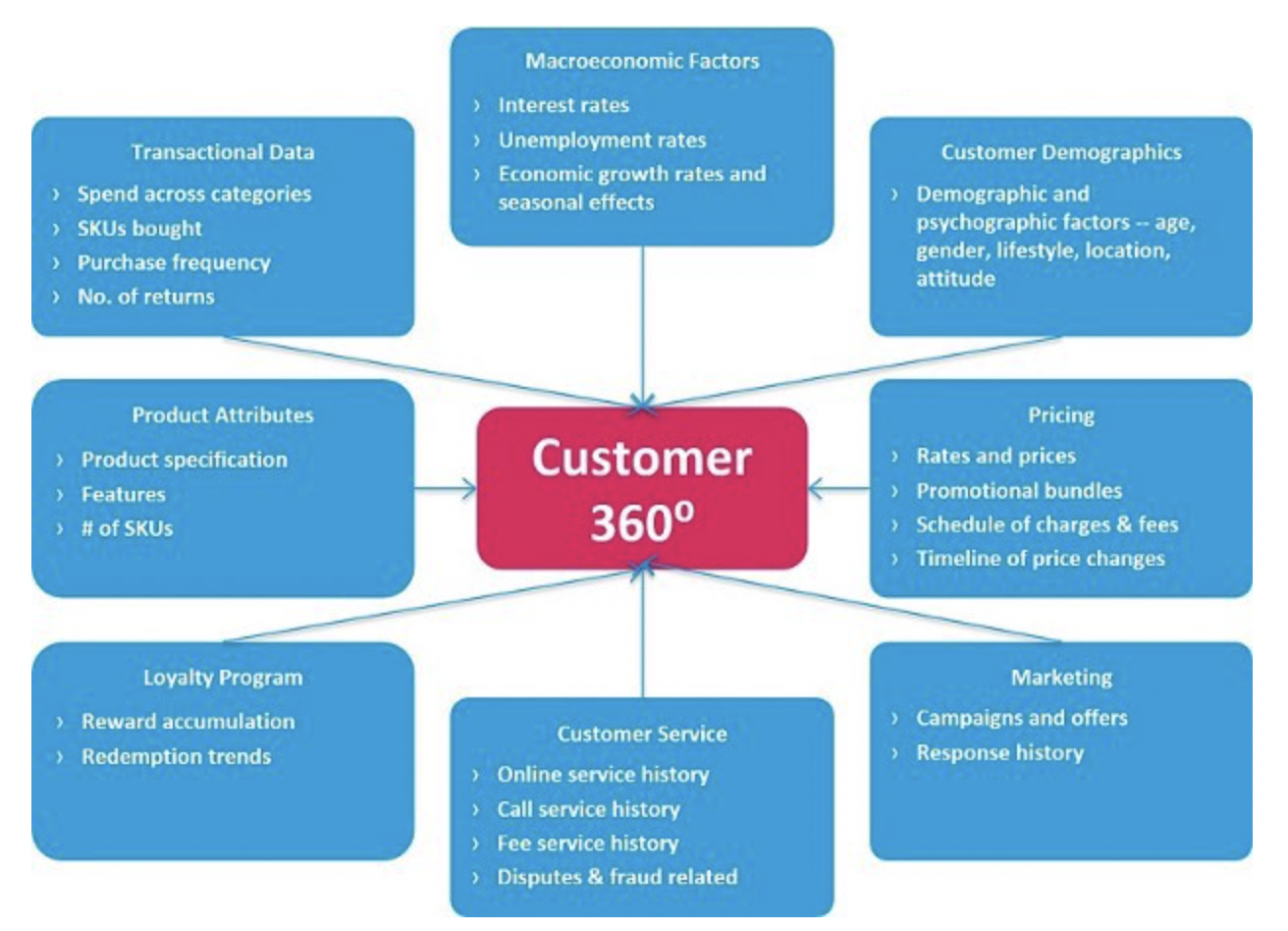Pybanking is an open source library that has the state of the art machine learning models for the banking industry. Documentation can be found here along with tutorials and sample datasets. To contribute to the project please feel free to send a pull request and out will review is at soon as possible. Machine Learning can help banks and financial institutions save money by automating and improving their processes. The AI journey for Banks and Financial institutions start with customer segmentation and understanding customer behaviour. Various statistical tools and exploratory analysis can be used to segment and understand customers and build their profile Building 360 Customer Profile.
On top of the customer profile, Machine learning can help banks to identify multiple revenue enhancement opportunities. Various predictive models like Revenue Prediction, Churn Prediction, Cross Selling Opportunities, Sales Funnel Analysis can be built to identify revenue opportunities. Models can also be built to prevent fraud, better assess risk, and to make better lending and investment decisions.
This is an opensource library which aims to create state of the art machine learning models to help all financial institutions deploy technology at scale. Multiple parts of the project use open source data available from different projects.
- Churn Model
- Marketing Prediction
- Transaction Prediction
If you want to use your own data for training/ prediction functions are implemented for the same.
The project is being maintained by Shorthills Tech, which is a leading data engineering services provider.
pip install pybankingfrom pybanking.example import custom_sklearn
custom_sklearn.get_sklearn_version()
'0.24.2'Title: Credit Card Customers. Name: Sakshi Goyal. Link: Kaggle
The dataset has 10,127 rows and 20 columns, namely, Attrition_Flag, Customer_Age, Gender, Dependent_count, Education_Level, Marital_Status, Income_Category, Card_Category, Months_on_book, Total_Relationship_Count, Months_Inactive_12_mon, Contacts_Count_12_mon, Credit_Limit, Total_Revolving_Bal, Avg_Open_To_Buy, Total_Amt_Chng_Q4_Q1, Total_Trans_Amt, Total_Trans_Ct, Total_Ct_Chng_Q4_Q1, Avg_Utilization_Ratio.
The model predicts whether a credit card customer will churn (1) or not (0). It can help a bank to take proactive measures to provide customers better services and and turn their decision around.
from pybanking.churn_prediction import model_churn
df = model_churn.get_data()
model = model_churn.pretrained("Logistic_Regression")
X, y = model_churn.preprocess_inputs(df)
model_churn.predict(X, model)Title: Banking Dataset - Marketing Targets. Name: Prakhar Rathi. Link: Kaggle
The dataset has 45,211 rows and 16 columns, namely, Job, Marital, Education, Default, Balance, Housing, Loan, Contact, Day, Month, Duration, Campaign, Pdays, Previous, Poutcome.
The model predicts whether a customer would subscribe for a term deposit in a direct marketing campaign. It can help the bank optimise their marketing spend and improve the ROI.
from pybanking.deposit_prediction import model_banking_deposit
df = model_banking_deposit.get_data()
model = model_banking_deposit.pretrained("Logistic_Regression")
X, y = model_banking_deposit.preprocess_inputs(df)
model_banking_deposit.predict(X, model)Title: Santander Customer Transaction Prediction. Name: Banco Santander. Link: Kaggle
The dataset has 15,000 rows and 201 columns, namely, target, var_0 ... var_199. The data is encrpyted to safeguard the privacy of customer.
The model predicts whether a customer will make a transaction in the future. It can help banks incentivce inactive customers.
from pybanking.transaction_prediction import model_transaction
df = model_transaction.get_data()
model = model_transaction.pretrained("Logistic_Regression")
X, y = model_transaction.preprocess_inputs(df)
model_transaction.predict(X, model)a
b
https://github.com/shorthillstech/Pybanking/blob/main/images/Pybanking_Churn.mp4
We love your input! We want to make contributing to this project as easy and transparent as possible, whether it's:
- Reporting a bug
- Discussing the current state of the code
- Submitting a fix
- Proposing new features
- Becoming a maintainer



